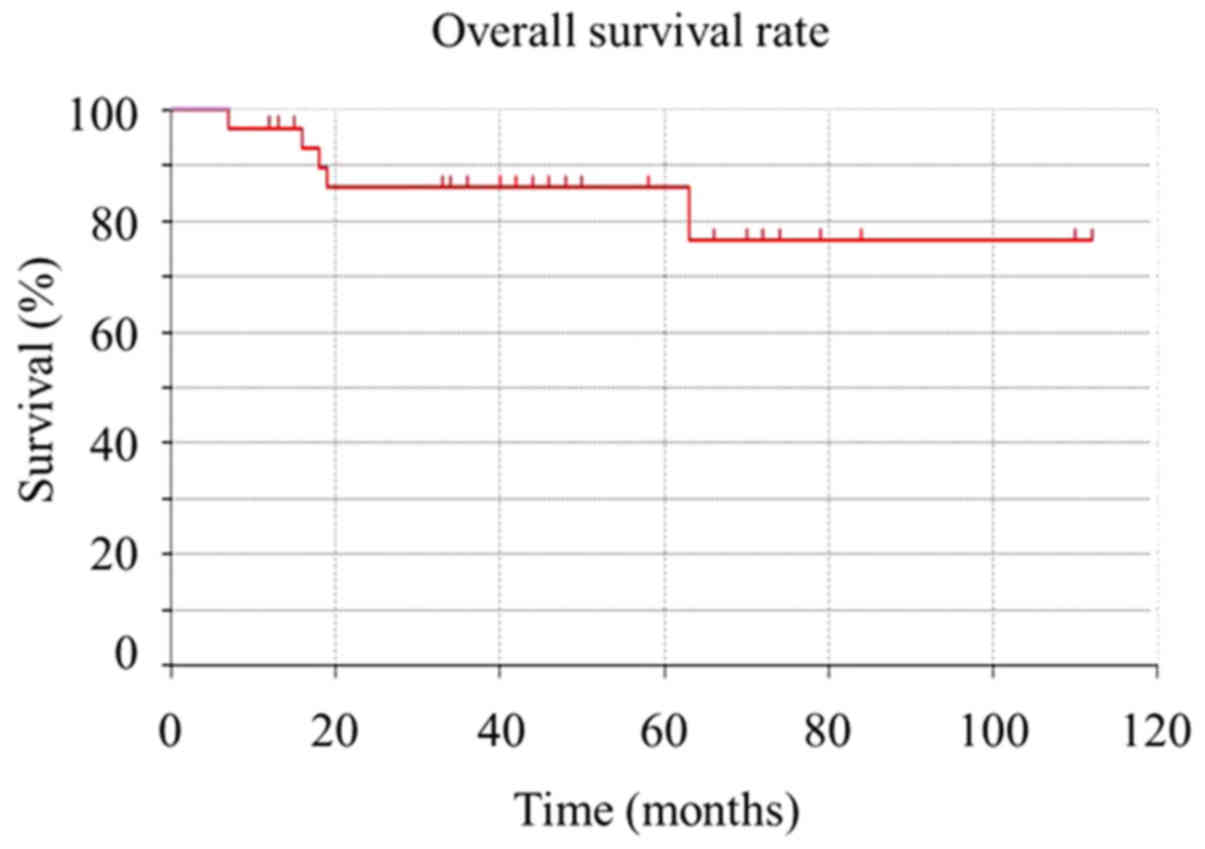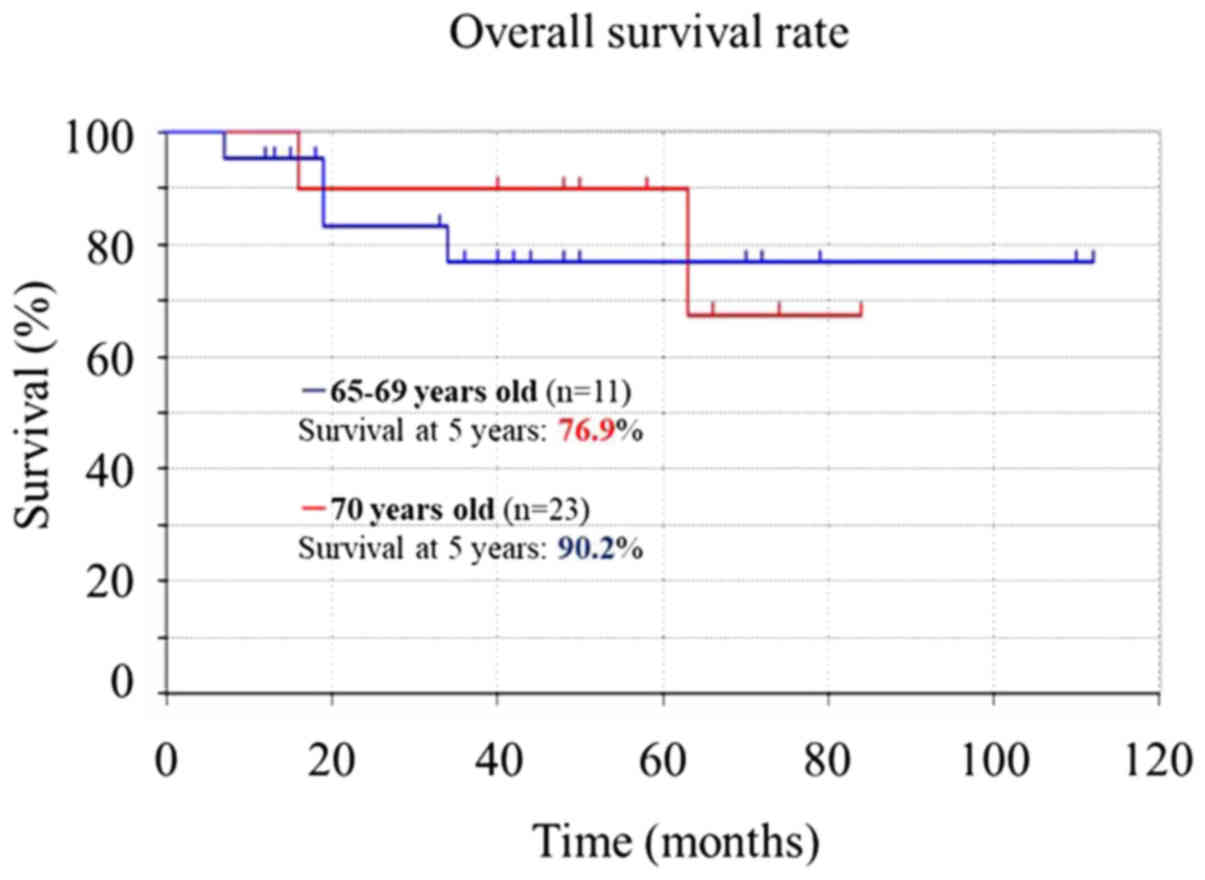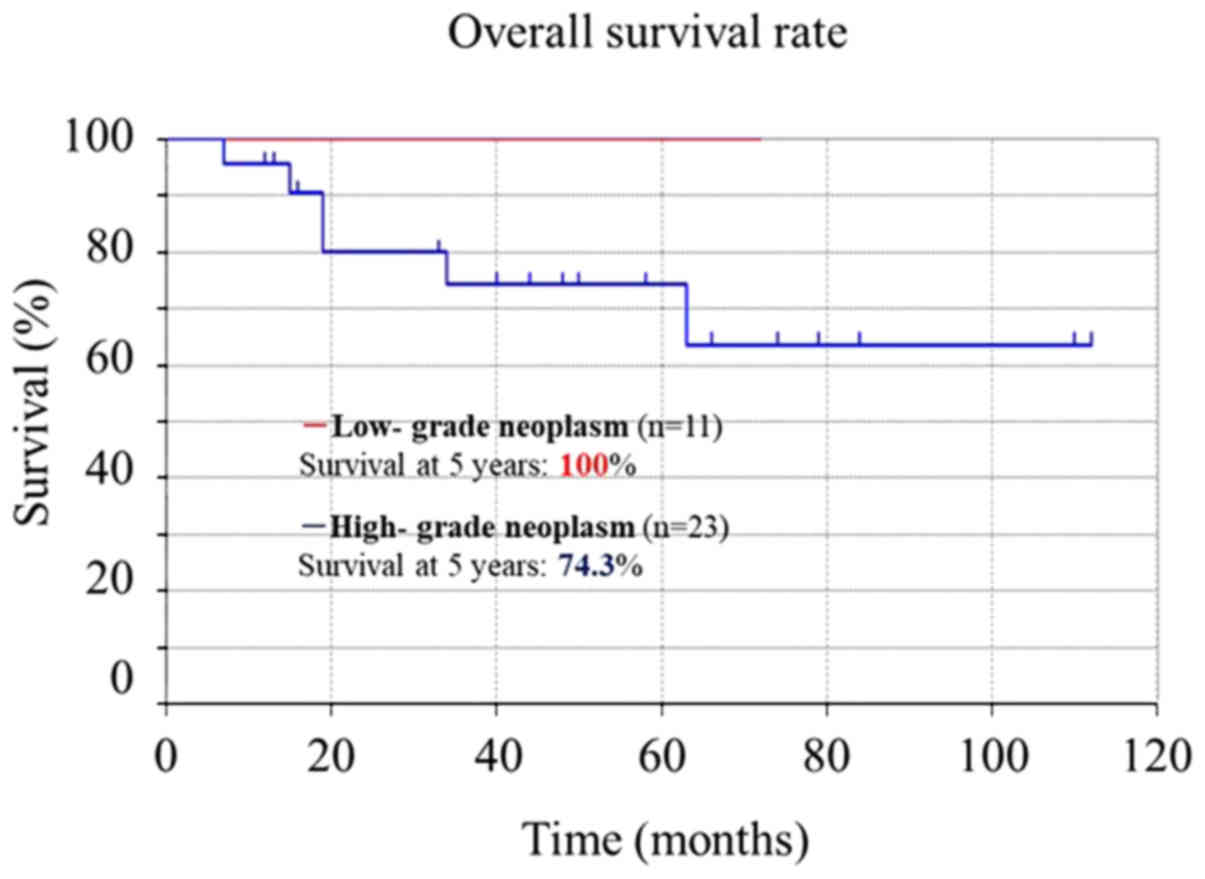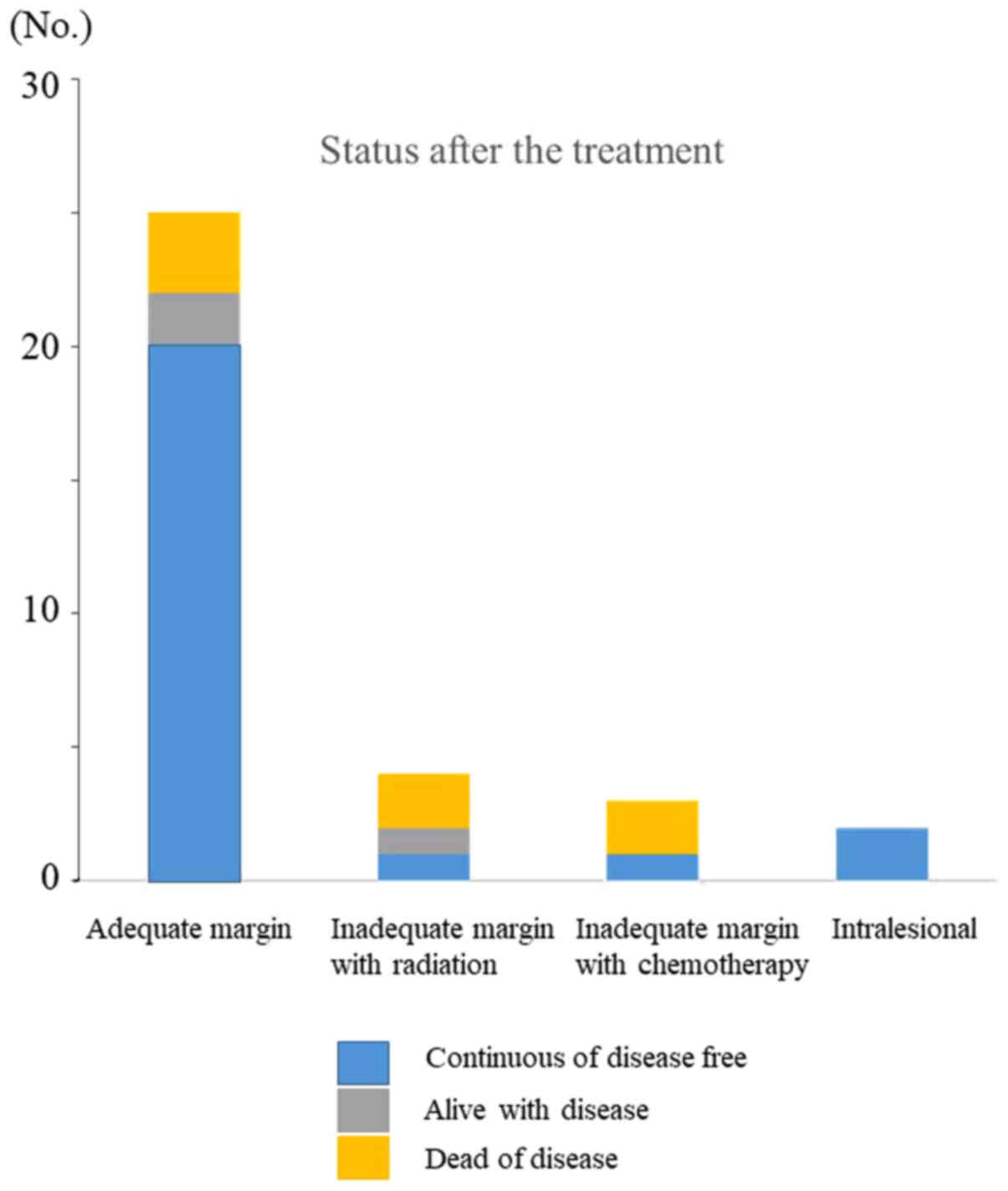|
1
|
Montgomery W, Ueda K, Jorgensen M, Stathis
S, Cheng Y and Nakamura T: Epidemiology, associated burden, and
current clinical practice for the diagnosis and management of
Alzheimer's disease in Japan. Clinicoecon Outcomes Res. 10:13–28.
2017. View Article : Google Scholar : PubMed/NCBI
|
|
2
|
Cabinet office, Government of Japan: Wite
paper on aged society. http://www8.cao.go.jp/kourei/whitepaper/w-2017/zenbun/29pdf_index.htmlSeptember
4–2018
|
|
3
|
Balducci L and Erchler WB: Cancer and
aging: A nexus at several levels. Nat Rev Cancer. 5:655–662. 2005.
View Article : Google Scholar : PubMed/NCBI
|
|
4
|
Torigoe T, Terakado A, Suehara Y, Kurosawa
H, Yazawa Y and Takagi T: Bone versus soft-tissue sarcomas in the
elderly. J Orthop Surg. 18:58–62. 2010. View Article : Google Scholar
|
|
5
|
Osaka S, Sugita H, Osaka E, Yoshida Y and
Ryu J: Surgical management of malignant soft tissue tumours in
patients aged 65 years or older. J Orthop Surg. 11:28–33. 2003.
View Article : Google Scholar
|
|
6
|
Lahat G, Dhuka AR, Lahat S, Lazar AJ,
Lewis VO, Lin PP, Feig B, Cormier JN, Hunt KK, Pisters PW, et al:
Complete soft tissue sarcoma resection is a viable treatment option
for select elderly patients. Ann Surg Oncol. 16:2579–2586. 2009.
View Article : Google Scholar : PubMed/NCBI
|
|
7
|
Boden RA, Clark MA, Neuhaus SJ, A'hern JR,
Thomas JM and Hayes AJ: Surgical management of soft tissue sarcoma
in patients over 80 years. Eur J Surg Oncol. 32:1154–1158. 2006.
View Article : Google Scholar : PubMed/NCBI
|
|
8
|
Kozawa E, Sugiura H, Tsukushi S, Urakawa
H, Arai E, Futamura N, Nakashima H, Yamada Y, Ishiguro N and
Nishida Y: Multiple primary malignancies in elderly patients with
high-grade soft tissue sarcoma. Int J Clin Oncol. 19:384–390. 2014.
View Article : Google Scholar : PubMed/NCBI
|
|
9
|
Yoneda Y, Kunisada T, Naka N, Nishida Y,
Kawai A, Morii T, Takeda K, Hasei J, Yamakawa Y and Ozaki T:
Japanese Musculoskeletal Oncology Group: Favorable outcome after
complete resection in elderly soft tissue sarcoma patients:
Japanese musculoskeletal oncology group study. Eur J Surg Oncol.
40:49–54. 2014. View Article : Google Scholar : PubMed/NCBI
|
|
10
|
Iwai T, Hoshi M, Takada J, Oebisu N, Aono
M, Takami M, Ieguchi M and Nakamura H: Prognostic factors for
elderly patients with primary malignant bone and soft tissue
tumors. Oncol Lett. 10:1799–1804. 2015. View Article : Google Scholar : PubMed/NCBI
|
|
11
|
Fletcher CD; Unni KK and Mertens F: World
Health Organization Classification of Tumors. Pathology and
Genetics of Tumors of Soft Tissue and Bone. Rydholm A, Singer S,
Sundaram M and Coinche JM: IARC Press; Lyon: pp. 12–18. 2002,
PubMed/NCBI
|
|
12
|
Weiss SW and Goldblum JR: Enzinger and
Weiss's Soft Tissue Tumors. Folpe AL: 4th. Mosby, St; Louis, MO:
pp. 1–10. 2001
|
|
13
|
Lee FY, Mankin HJ, Fondren G, Gebhardt MC,
Springfield DS, Rosenberg AE and Jennings LC: Chondrosarcoma of
bone: An assessment of outcome. J Bone Joint Surg Am. 81:326–338.
1999. View Article : Google Scholar : PubMed/NCBI
|
|
14
|
Kawaguchi N, Ahmed AR, Matsumoto S, Manabe
J and Matsushita Y: The concept of curative margin in surgery for
bone and soft tissue sarcoma. Clin Orthop Relat Res. 419:165–172.
2004. View Article : Google Scholar
|
|
15
|
Gundle KR, Kafchinski L, Gupta S, Griffin
AM, Dickson BC, Chung PW, Catton CN, O'Sullivan B, Wunder JS and
Ferguson PC: Analysis of margin classification systems for
assessing the risk of local recurrence after soft tissue sarcoma
resection. J Clin Oncol. 36:704–709. 2018. View Article : Google Scholar : PubMed/NCBI
|
|
16
|
Iwamoto Y, Tanaka K, Isu K, Kawai A,
Tatezaki S, Ishii T, Kushida K, Beppu Y, Usui M, Tateishi A, et al:
Multiinstitutional phase II study of neoadjuvant chemotherapy for
osteosarcoma (NECO study) in Japan: NECO-93J and NECO-95J. J Orthop
Sci. 14:397–404. 2009. View Article : Google Scholar : PubMed/NCBI
|
|
17
|
Woll PJ, Reichardt P, Le Cesne A, Bonvalot
S, Azzarelli A, Hoekstra HJ, Leahy M, Van Coevorden F, Verweij J,
Hogendoorn PC, et al: Adjuvant chemotherapy with doxorubicin,
ifosfamide, and lenograstim for resected soft-tissue sarcoma (EORTC
62931): A multicentre randomised controlled trial. Lancet Oncol.
13:1045–1054. 2012. View Article : Google Scholar : PubMed/NCBI
|
|
18
|
Oken MM, Creech RH, Tormey DC, Horton J,
Davis TE, McFadden ET and Carbone PP: Toxicity and response
criteria of the Eastern Cooperative Oncology Group. Am J Clin
Oncol. 5:649–655. 1982. View Article : Google Scholar : PubMed/NCBI
|
|
19
|
Hosking MP, Warner MA, Lobdell CM, Offord
KP and Melton LJ III: Outcomes of surgery in patients 90 years of
age and older. JAMA. 261:1909–1915. 1989. View Article : Google Scholar : PubMed/NCBI
|
|
20
|
Pitcher ME, Fish S and Thomas JM:
Management of soft tissue sarcoma. Br J Surg. 81:1136–1139. 1994.
View Article : Google Scholar : PubMed/NCBI
|
|
21
|
Clark MA, Fisher C, Judson I and Thomas
JM: Soft-tissue sarcomas in adults. N Engl J Med. 353:701–711.
2005. View Article : Google Scholar : PubMed/NCBI
|
|
22
|
Ramanathan RC, A'Hern R, Fisher C and
Thomas JM: Prognostic index for extremity soft tissue sarcoma with
isolated local recurrence. Ann Surg Oncol. 8:278–289. 2001.
View Article : Google Scholar : PubMed/NCBI
|
|
23
|
Harrison DJ, Geller DS, Gill JD, Lewis VO
and Gorlicl R: Current and future therapeutic approaches for
osteosarcoma. Expert Rev Anticancer Ther. 18:39–50. 2018.
View Article : Google Scholar : PubMed/NCBI
|
|
24
|
Hager S, Makowiec F, Henne K, Hopt UT and
Wittel UA: Significant benefits in survival by the use of surgery
combined with radiotherapy for retroperitoneal soft tissue sarcoma.
Radiat Oncol. 12:292017. View Article : Google Scholar : PubMed/NCBI
|
|
25
|
ESMO/European Sarcoma Network Working
Group: Soft tissue, visceral sarcomas: ESMO clinical practice
guidelines for diagnosis, treatment and follow-up. Ann Oncol. 23
Suppl 7:vii92–vii99. 2012.PubMed/NCBI
|
|
26
|
Linch M, Miah AB, Thway K, Judson IR and
Benson C: Systemic treatment of soft-tissue sarcoma-gold standard
and novel therapies. Nat Rev Clin Oncol. 11:187–202. 2014.
View Article : Google Scholar : PubMed/NCBI
|
|
27
|
Farry JK, Flombaum CD and Latcha S: Long
term renal toxicity of ifosfamide in adult patients-5 year data.
Eur J Cancer. 48:1326–1331. 2012. View Article : Google Scholar : PubMed/NCBI
|
|
28
|
Matushansky I, Dela Cruz F, Insel BJ,
Hershman DL and Neugut AI: Chemotherapy use in elderly patients
with soft tissue sarcoma: A population-based study. Cancer Invest.
31:83–91. 2013. View Article : Google Scholar : PubMed/NCBI
|
|
29
|
Fletcher CD, Bridge JA, Hogendoom PC and
Mertens F: WHO Classification of Tumors of Soft Tissue and Bone.
Mertens F (eds). 4th edition. IARC Publications, France,. 5:33–38.
2013.
|


















